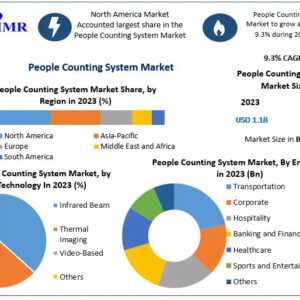As cybersecurity threats grow in complexity, organizations are re-evaluating their security architectures to keep pace. Two prominent technologies often discussed in this evolution are Security Information and Event Management (SIEM) and Extended Detection and Response (XDR). While both play crucial roles in threat detection and response, the question arises: Will XDR eventually replace SIEM?
To answer this, we must dive into the capabilities of each technology, examine their overlaps and differences, and explore what industry experts predict about their future.
Understanding SIEM: The Legacy Backbone
SIEM platforms have long been the central nervous system of enterprise cybersecurity. They collect, aggregate, and analyze logs and security events from various sources—servers, endpoints, network devices, applications, and more. SIEM solutions are instrumental for:
-
Compliance reporting (e.g., HIPAA, PCI DSS, GDPR)
-
Log management and retention
-
Threat detection via correlation rules
-
Incident investigation and forensic analysis
However, SIEMs often require intensive manual configuration, frequent tuning of correlation rules, and substantial storage infrastructure. The learning curve and time to value can be significant.
Introducing XDR: A Unified Detection and Response Platform
XDR is a newer approach designed to automate and unify threat detection, investigation, and response across multiple security layers—endpoint, network, cloud, and more. Unlike SIEM, which focuses on collecting data, XDR integrates tools and applies analytics natively, providing:
-
Real-time threat detection
-
Automated correlation and response
-
Centralized visibility and control
-
Built-in analytics and AI-driven insights
XDR promises faster mean time to detect (MTTD) and mean time to respond (MTTR) than traditional systems by reducing reliance on manual processes.
SIEM vs. XDR: Key Differences
| Feature | SIEM | XDR |
|---|---|---|
| Data Collection | Broad and customizable | Narrower but deeper, built-in |
| Integration | Vendor-agnostic, open-ended | Tighter, more vendor-driven |
| Analytics | Rule-based, customizable | Machine learning and behavioral |
| Deployment Complexity | High | Moderate to low |
| Use Cases | Compliance, log storage, auditing | Threat detection and response |
| Response Capabilities | Manual or SOAR-based | Automated, native to platform |
Industry Trends: Convergence Over Replacement
Despite the growing popularity of XDR, most experts do not foresee a full replacement of SIEM by XDR—at least not in the near term. Here’s why:
1. Compliance Requirements Still Favor SIEM
SIEM remains superior for log management, compliance auditing, and long-term data retention, which are not the primary focus of XDR platforms. Many organizations, especially in regulated industries, rely heavily on SIEM for audit readiness.
2. Different Core Strengths
XDR focuses on real-time threat detection and automated response, while SIEM shines in historical analysis and forensic investigation. For organizations with mature security operations centers (SOCs), SIEM still offers granular control and flexibility.
3. XDR is Often Built on Top of SIEM
Some modern XDR solutions even ingest data from existing SIEM platforms, extending their capabilities with behavioral analytics, threat intelligence enrichment, and automated workflows.
4. Vendor Ecosystems and Investments
Many enterprises have made significant investments in SIEM and are hesitant to abandon them. Instead, they are layering XDR on top, using it as an enhancement rather than a replacement.
What Experts Say
Gartner
“XDR will complement existing SIEM and SOAR investments by offering faster time to value in specific detection and response scenarios.”
Forrester
“Rather than replacing SIEM, XDR solutions will coexist, focusing on immediate detection and response while SIEM manages compliance and logging at scale.”
IDC
“Organizations seeking efficiency and integration will lean into XDR, but SIEM’s role in compliance and data retention ensures it remains a necessary foundation.”
Security Analysts
Most practitioners agree that a hybrid model is emerging—one that blends SIEM for visibility and compliance with XDR for agility and precision in response.
The Future: Integration and Evolution
Instead of a clean replacement, the trend is toward integration and convergence. Here’s what the future may look like:
-
XDR-enhanced SIEMs: Some SIEM vendors are embedding XDR-like capabilities—AI, behavior analytics, automated response—into their platforms.
-
SIEM-less Security for SMBs: Smaller organizations may bypass SIEM entirely, opting for lightweight XDR solutions that deliver quicker results without infrastructure burdens.
-
Open XDR and API-Driven Models: Open XDR platforms will allow organizations to plug in data from SIEMs, firewalls, cloud platforms, and more—blurring the lines between them.
What Should Your Organization Do?
The right strategy depends on your needs:
-
If you’re heavily compliance-driven: SIEM is indispensable, but XDR can augment your detection capabilities.
-
If you’re resource-constrained: XDR may offer faster ROI with lower overhead.
-
If you’re building a modern SOC: Combining SIEM, SOAR, and XDR provides a comprehensive and layered defense.
Conclusion: Complementary, Not Competitive
XDR is not here to replace SIEM entirely—it is here to reshape how detection and response are executed. For many, the optimal approach is SIEM + XDR, where the strengths of both platforms are leveraged in tandem.
The cybersecurity future is not about choosing one over the other, but about orchestrating multiple tools to achieve faster detection, better visibility, and more effective response.
As attackers grow more sophisticated, so too must our defenses—and that means strategic convergence, not replacement.





